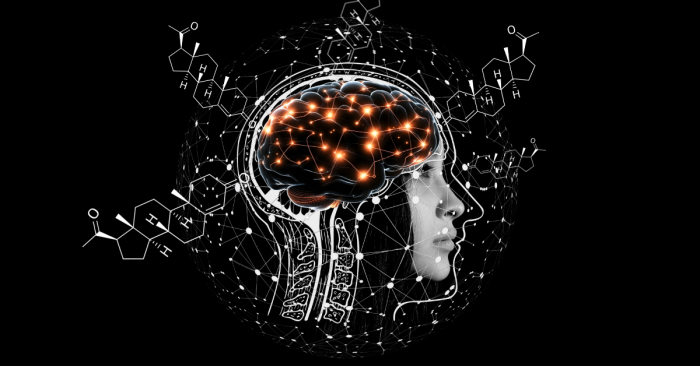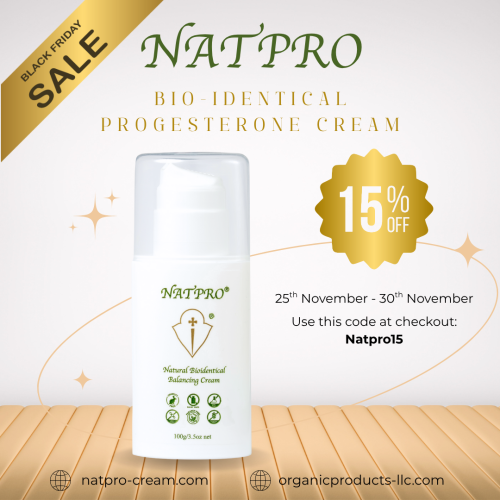Osteoporosis
There is an epidemic of osteoporosis in the west where 1:3 women and 1:12 men get it.
If the absorption of old minerals from the bone into the blood stream exceeds the deposition of new minerals then osteoporosis occurs. Osteoblast cells govern the deposition of new bone, while osteoclast cells remove old bone.
Osteoblasts are immature bone cells found on the surface of bones. They make a protein which is mainly Type 1 collagen, this forms the matrix into which minerals are deposited. Progesterone and testosterone stimulate osteoblast activity.
Mature bone cells are called osteocytes, they originate from osteoblasts.
Osteoclasts cells are responsible for bone resorption, or removing old bone to make place for new. Oestrogen slows down the action of osteoclasts.
Most at risk for osteoporosis are those who..
- are deficient in vitamin D, most at risk are those who avoid or cover up when in the sun
- deficient in calcium, magnesium, zinc, boron and vitamin K
- deficient in protein
- exercise excessively, i.e. marathon runners and ballet dancers
- under exercise
- are or were anorexics and bulimics
- smoke
- drink excessive amounts of alcohol and coffee, or carbonated soft drinks which contain large
- amounts of phosphorus
- deficient in certain amino sugars, particularly proteoglycans (PGs) and glycosaminoglycans (GAGs)
- have a low level of stomach acid and digestive enzymes, which is very prevalent in the elderly
- had previously taken/are taking steroids, i.e. cortisone and the Pill, or anti-seizure or
- anticoagulant drugs
- had or have thyroid disease
- had a loss of menstruation for greater than 6 months, other than pregnancy
- eat a typical western diet of processed foods and refined grains
Taking large quantities of calcium only will not improve bone density, but could cause it to be deposited in the soft tissues. Other essential nutrients are magnesium and vitamins D and B6, without these calcium is not deposited in bones.
Normal levels of calcium in bones but low levels of magnesium show abnormal calcification of the bone, which increases the risk of fractures. High levels of calcium in the blood have been implicated in gall and kidney stones, arthritic spurs and calcification of the arteries and brain. Plus depression, blood glucose problems and increased risk of myocardial infarction.
Although people at risk are encouraged to take calcium, it is imperative to have a hair analysis first to ascertain the level of both calcium and magnesium.
If the intake of these two minerals is too high, they can become toxic and the result of toxic levels is severe depression. A hair analysis will confirm which of the two minerals should be taken. Usually magnesium is too low, it's low in most soils and therefore food. It's also the most important co-factor for vitamin D. See Trace Elements - Hair mineral analysis.
If the intake of these two minerals is too high, they can become toxic and the result of toxic levels is severe depression. A hair analysis will confirm which of the two minerals should be taken, if any.
The amino acid taurine is an important osmolyte, vital in regulating the flow of calcium, magnesium, potassium and sodium into and out of all cells.
Recent research has shown that a high protein diet increases bone strength by aiding in calcium deposition.
The amino sugars have been found to be critical for strong bones. In particular proteoglycans (PGs) and glycosaminoglycans (GAGs). Osteoarthritis is also accompanied by abnormal bone mineralization, plus joint cartilage and GAG depletion. Glucosamine and chondroitin are based on GAG sugar molecules.
Homocysteine has been implicated in osteoporosis, so it would be advisable to have levels checked, and if high take the nutrients needed to lower it.
A high salt and sugar intake causes the body to excrete increased amounts of calcium.
It is generally believed that osteoporosis in women is due to oestrogen loss beginning at menopause. But as it often starts in women during their mid thirties when they are still making a great deal of oestrogen, this argument doesnt hold much water. In fact some women have lost 25% of their bone density by the time they reach menopause.
Taking oestrogen will slow the loss of bone for up to 5 years, thereafter its benefit declines but the risk of breast cancer increases to 40%. Once the oestrogen is stopped the bones quickly break down to their previous level.
Progesterone, because of its affect on osteoblast cells, is actively involved in the building of bones. But unlike oestrogen, if the treatment is stopped the bones remain strong and there is no risk of cancer. Progesterone also increases thymidine incorporation into DNA, and proline incorporation into collagen proteins.
Vitamin D is essential, have a blood test done to check the level. The test should only be done for 25-hydroxyvitamin D, also called calcidiol.
30-50% of people have a deficiency, particularly those living in climates with little sun, living above 34 degrees north or south of the equator, work in doors, have dark skin, and spend little time in the sun.
The minimum daily dose should be 5000ius per day. Although the latest research indicates it should be 10,000iu's per day, see here.
The following list gives an indication of levels of vitamin D found in the blood....
- Sufficient 70 100 ng/mL or 175 - 250 nmol/L
- Hypovitaminosis less than 30 ng/ml or 75 nmol/L
- Deficiency less than 25 ng/L or 62 nmol/L
For more information please see:
Progesterone and Osteoporosis
Depending on the severity of the symptoms, women should use between 100-200mg/day, men should use between 10-100mg/day. For more information please see How to use progesterone.
Before using progesterone it's essential to first read the page on Oestrogen Dominance.
The following nutrients are some of those needed to build bone, by no means all...
- vitamin D
- magnesium
- calcium
- phosphorus
- boron
- zinc
- taurine
- N-acetyl cysteine
- vitamin C
- vitamin B6
- glucosamine sulphate or hydrochloride
- chondroitin
- vitamin K
- probiotics (to increase vitamin K)
- protein
- proteoglycans
- glycosaminoglycans
If homocysteine is high the following nutrients reduce it...
- folic acid
- vitamin B2
- vitamin B6
- vitamin B12
- TMG (tri-methyl glycine)
- zinc
After the age of about forty-five both stomach acid and digestive enzyme production tends to decrease. If they are low consider taking supplementary enzymes and betaine hydrochloride (hydrochloric acid). Weight bearing exercise is essential.
Please see here for more information on..
Nutrition
Avoid...
- all forms of oestrogen, the Pill, progestin only, HRT, tamoxifen, soy, unless fermented
- tap water, which is now contaminated with prescription drugs, including oestrogen from the Pill and HRT, plus the oestrogen mimics generated by industry. Drink only filtered water
- fluoride (even in toothpaste), as several studies have shown that although it increases the density of bone, the bones are actually weakened by it and it therefore increases the risk of hip fractures
- the bi-phosphonate drugs, as they can result in an increased risk in fracture, jawbone necrosis, oesophageal cancer, dyspepsia, nausea, abdominal pain, erosive oesophagitis, oesophageal ulcers, and may increase the risk for unusual femur fracture
Read all labels on containers, especially those for food and cosmetics. Look for natural alternatives to body care products, many contain high levels of endocrine disruptors and carcinogens, particularly the sunscreens.
For more information on natural sunscreens please see the this website.
For information on toxins found in skin care see the website Skin Deep.
As the website 'Our Stolen Future' says... "The cycle starts with an insulin injection, sunscreen slathered onto an arm, or a bottle of old pills dumped in the toilet... chemicals trickle back into rivers and underground aquifers that feed our taps. We may reach the afterlife, but our drugs are reincarnated."
For information on endocrine disruptors see Our Stolen Future.
Reference websites
Medline Alendronate (Fosamax)
Medline Raloxifene (Evista)
Dr Mercola 'evista'
Hair mineral analysis
Dr Mercola 'fatal stroke'
 Are you struggling with irregular cycles, unwanted hair growth, or unexplained fatigue? You’re not alone. Polycystic Ovarian Syndrome (PCOS) affects up to 10% of women of reproductive age—and many mor…
Are you struggling with irregular cycles, unwanted hair growth, or unexplained fatigue? You’re not alone. Polycystic Ovarian Syndrome (PCOS) affects up to 10% of women of reproductive age—and many mor… While progesterone is often discussed in relation to reproductive health, emerging research reveals its remarkable role in supporting brain function and protecting against neurological decline. Proges…
While progesterone is often discussed in relation to reproductive health, emerging research reveals its remarkable role in supporting brain function and protecting against neurological decline. Proges… Incase you missed it!
Today is the last day for you to claim 15% off our Natpro 100ml Dispensers. The sale ends at midnight tonight.
How to Claim Your 15% Discount:
•Shop at
Incase you missed it!
Today is the last day for you to claim 15% off our Natpro 100ml Dispensers. The sale ends at midnight tonight.
How to Claim Your 15% Discount:
•Shop at  To all our valued customers, We’ve heard your requests for more flexibility with payment options and clearer access to usage and dosage instructions, and so we’re delighted to announce the launch of o…
To all our valued customers, We’ve heard your requests for more flexibility with payment options and clearer access to usage and dosage instructions, and so we’re delighted to announce the launch of o…